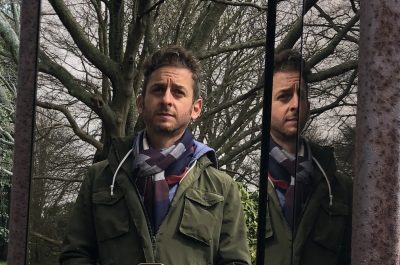Ground-Level Galaxy: “Andor” DP Christophe Nuyens on Making the Most Visceral “Star Wars” Story Ever Told
The satisfactions of Tony Gilroy‘s Andor were such that many viewers comforted themselves when the series came to an end on May 13 by immediately turning to Rogue One, the 2016 feature film that Andor served as a prequel series for. Such has been the power of Andor—it’s been hard to let go, and there’s no better way to keep the rebel spirit alive than by following Cassian Andor’s (Diego Luna) story to its bittersweet conclusion. Rogue One is really the only way to wean yourself off what’s been one of the most deeply gratifying Star Wars stories ever told.
The journey of Cassian Andor from reluctant rebel manque to becoming one of the key architects of the Death Star’s destruction—detailed, you might remember, in George Lucas’s 1977 Big Bang event movie, Star Wars IV: A New Hope—is the backbone of Andor. Yet what has made the series so relentlessly compelling is how the galactic struggle that Lucas conjured between a scrappy, often squabbling rebel alliance and a ruthless fascist Empire was brought down to Earth, so to speak, and into the streets, in Andor. Lucas gave us a battle between good and evil that was stark and colossal and shot through with Jedi masters and Sith Lords. Gilroy and his team grounded the struggle with people (and aliens) who wouldn’t return as Force Ghosts when they perished in the cause. In the place of the Death Star obliterating Leia Organa’s home planet of Alderaan, Andor gave us the massacre on Ghorman, all the more horrifying for being so up close and personal.
While Andor is nominally centered around Cassian, in reality, the series was a thrilling ensemble story, tracking a growing alliance of rebels, many of whom aren’t dashing pilots like Cassian or DH-16 blaster-toting guerrilla warriors like Saw Gerrera (Forest Whitaker). These are disaffected civilians like Cassian’s adoptive mother, Maarva, a former mechanical salvager who, as a member of the Daughters of Ferrix, became a key figure in the growing resistance. Or moles within the ISB (Imperial Security Bureau) like Lonnie Jung, who existed in a state of perpetual paranoia and who paid the ultimate price to deliver key information to rebel spies like Luthen Rael (Stellan Skarsgård) and his ally and eventual successor, Kleya Marki (Elizabeth Dulua). Andor follows politicians like Mon Mothma (Genevieve O’Reilly), who eventually becomes the de facto leader of the alliance, while giving key moments to smaller players like Thela (Stefan Crepon), a hotel clerk in Palmo who tells Cassian that “rebellions are built on hope,” a line that returns in Rogue One.
Helping frame this story of the rebellion’s many authors was cinematographer Christophe Nuyens, whose mission was to lens the first six episodes of season 2. While Nuyens is adept at framing and differentiating the many planets and terrific set pieces that Star Wars fans are familiar with and count on, he also helped bring the series to street level, turning events like a wedding and meeting a partner’s parent into thrilling sequences. We spoke to Nuyens about what made Andor such a compelling series and how he framed the struggle against fascism on such a personal level.
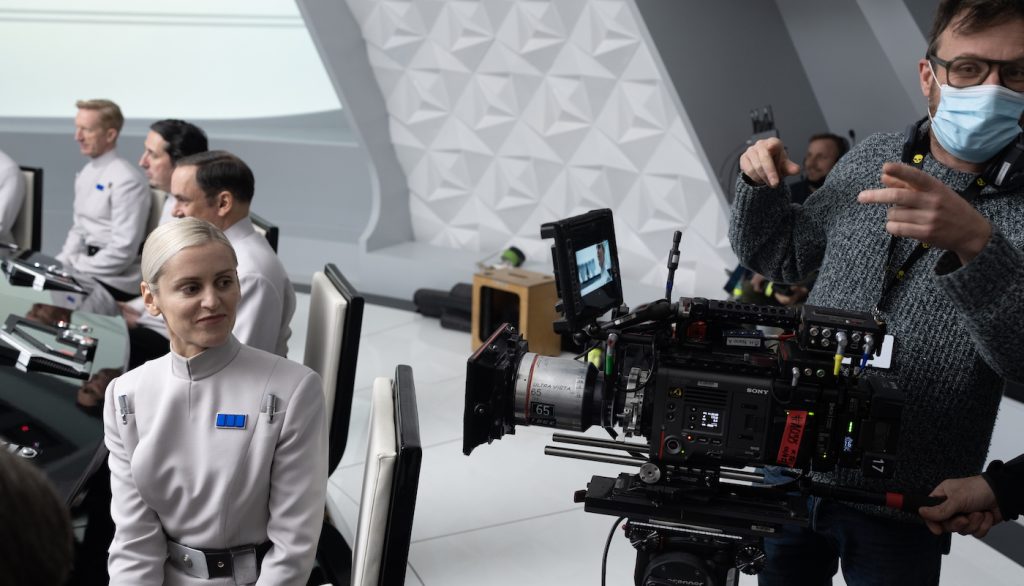
On a personal level, how does it feel to work on one of the most critically acclaimed narratives in the entire Star Wars galaxy?
I feel honored. One of my favorite Star Wars movies is Rogue One, so I was honored to be asked to work on the first six episodes of the prequel to that film this season.
Andor is, of course, a part of the broader Star Wars universe, but it has consistently felt unlike any other Star Wars film or series. Were there any conversations about how Andor‘s aesthetics and storytelling stand apart from more traditional Star Wars stories when you came aboard?
We didn’t have a big brief about any Star Wars link. I think the most important thing is that we stayed in the universe of the first season of Andor, which is, I think, one of the most human Star Wars stories ever told. For the look and feel of the series, they gave us quite a bit of freedom.
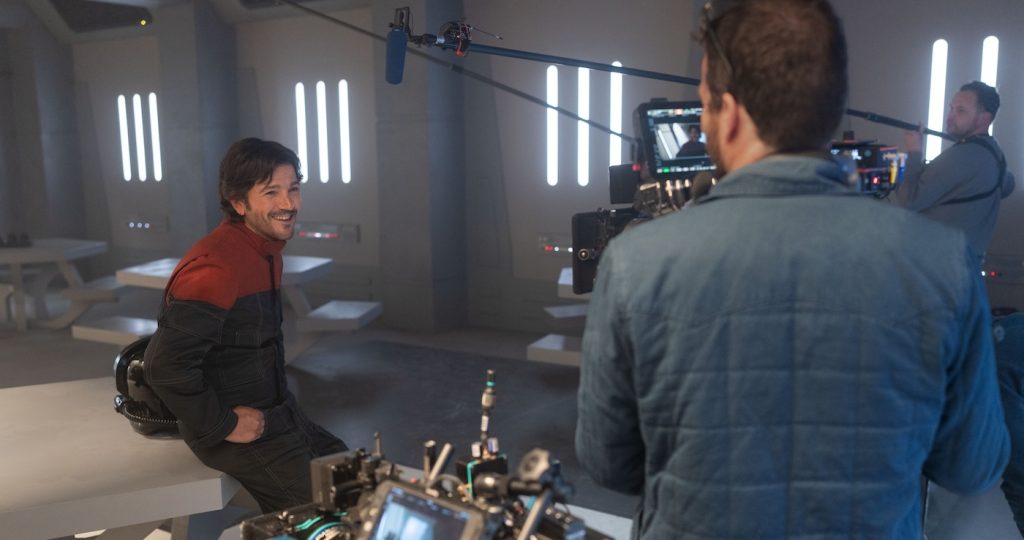
What were the sets like for season two, which hops around the galaxy, from Coruscant and Chandrila to Ghorman, Mina-Rau, and Yavin 4?
It’s a big mix. A lot of it was built on stages at Pinewood and Longcross. For example, on the backlot of Pinewood, we built the plaza [of the Ghorman city of Palmo], which was beautiful and enormous. We also built the streets of Ghorman there. Longcross was where we filmed the jungle bits, on Yavin 4, because Longcross is an ancient military district, so there’s a lot of forest there. We built out bits of forest, and honestly, it looked like I was shooting in Vietnam. The art department on this show is incredible. Luke Hull, our production designer, did such beautiful work. It was a pleasure to light and film on those sets.
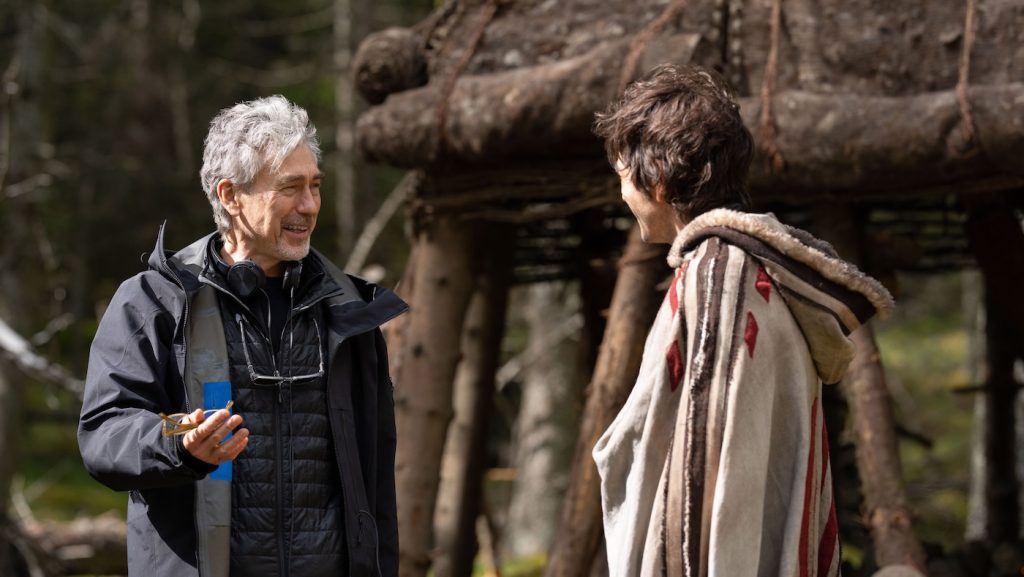
Was the central square in Palmo on Ghorman largely a practical set?
It was a practical set; the hotel was there, the entrance of the ISB offices was there, and the bar was there. All of that was practical. The stairs were there, too. The only thing that wasn’t there was the second level, which was all VFX extension. There was so much detail put into those sets.
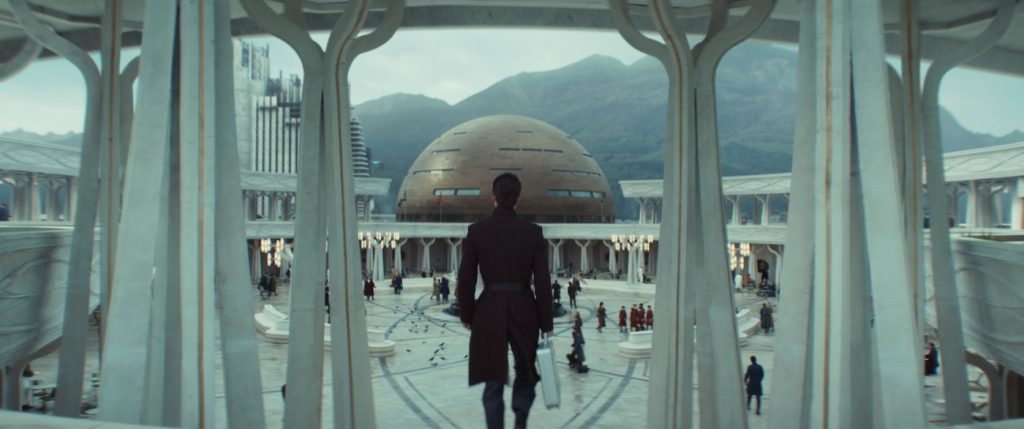
It had a European capital vibe…
That was the pitch, actually! Tony’s pitch was that it should feel like a town in Italy or France. So we started looking for references, and the code name for the set ended up being Turin. It’s really based on a mix between the architecture of France and the French Resistance, and where it’s located on the planet is more like the north of Italy, in the mountains. It was really nice to play with. When we started brainstorming about Ghorman and how the light should look, Tony was so precise about what he wanted for us that it was a gift to start looking for references and execute it.
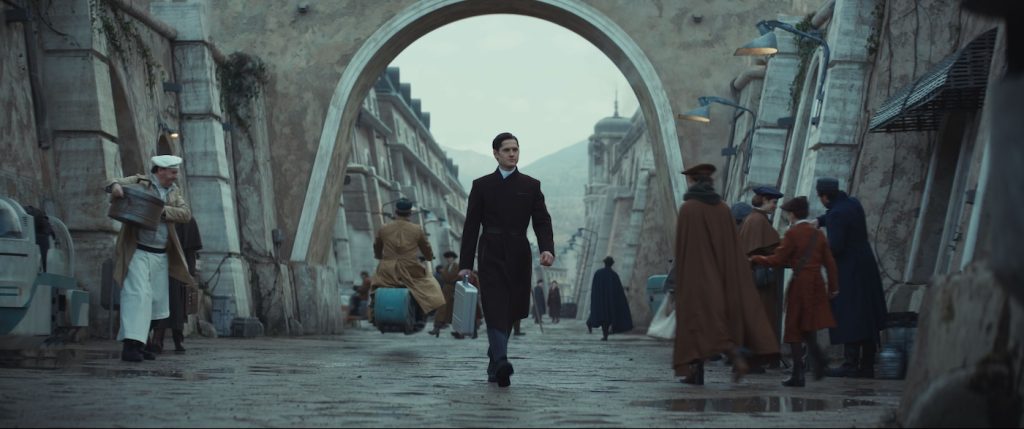
How did you approach keeping your eye on the narrative and human element of Andor, which is such a striking depiction of the courageous acts, both big and small, of people resisting a growing dictatorship?
We had a lot of prep on this series, and for every scene and every set, we’d read the script several times, generate ideas, and look for references. There was a lot of prep, and we were always looking for a flow between scenes. At the end of almost every episode, there’s a pile of edits going between different planets and different moments, and it was important that those scenes flowed into each other. The camera moves, the lighting flares, and all of it has to connect. We did a lot of shot listing, pre-vising, and testing. That’s the good thing about having that prep: we could test to see if things worked.
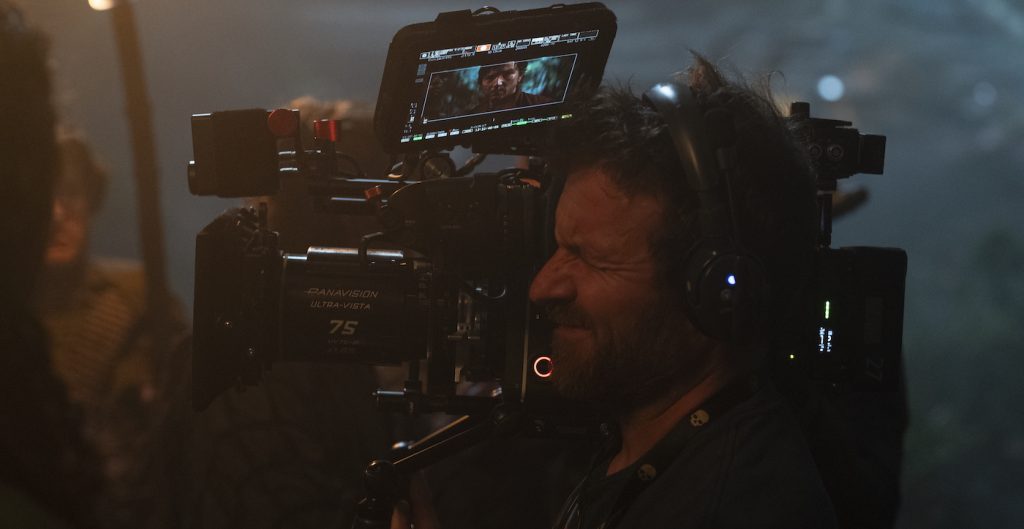
What kind of cameras are you using?
We used Venice cameras, the same as the first season. The only thing I changed was that I used Ultra-Vista lenses that cover the full sensor. Rogue One was shot on Alexa 65mm, which is a large-format camera, so it was important to go to a larger format, open the scope a little bit, and raise it a little bit toward Rogue One.
How did the three-episode-at-a-time releases shape the way you approached your work on the first six episodes?
Oh yeah, because we each did two sets of three episodes, it was really important that every three-episode arc felt different, both in lighting and feeling. For example, in the first three episodes, we said, Okay, you’ve got Mina-Rau, it’s a sunny planet, and it should feel like everything is good, but suddenly, everything starts to collapse. You have the wedding on Chandrila, which is also sunny, so in those first three episodes, the sun is coming in, and there’s a little flare and a warm feeling. Then, in the second three episodes on Ghorman, it was like a city in the Alps in winter. So light-wise, I was always thinking about the north of Italy in winter, and we’re shooting at the moment that the sun is behind the mountains. It’s still day, but the light is very blue. We took the approach that those three episodes felt a bit darker, a bit moodier. We really tried to differentiate those blocks of episodes.
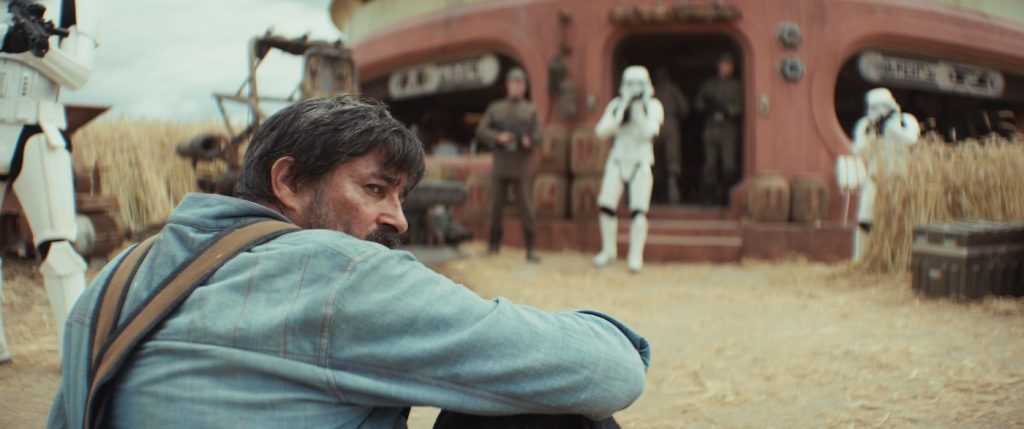
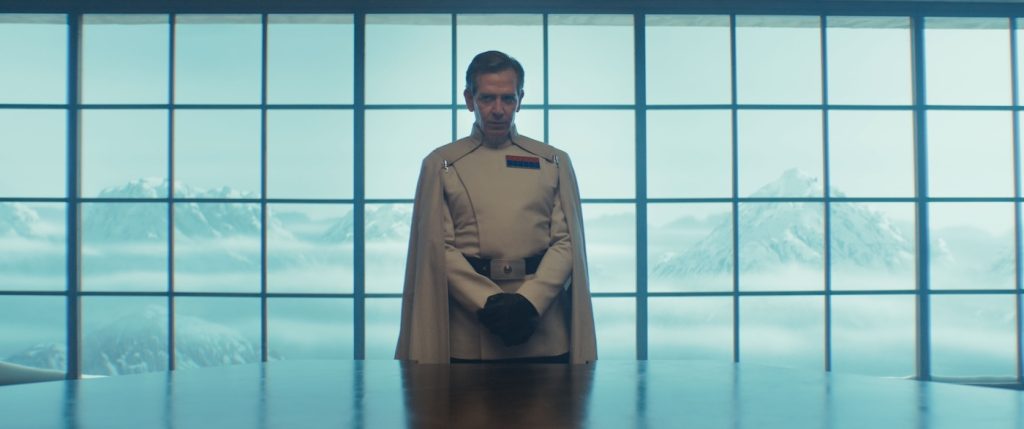
Let’s talk about when Mon Mothma kind of loses it at the end of the wedding in episode 3, “Harvest,” where she starts dancing…
There was a lot of back and forth in that episode. In the beginning, when we were reading the scene, we read it as a night scene. We knew Tony wanted to have a scene where Mon is losing it, it should feel a bit like a nightclub, and we were thinking about ideas both in the Star Wars world and in the Andor world to create something like that. Then suddenly, in a meeting, Tony said, ‘No, no, no, it’s a day scene, because on the other planet, everything that’s happening is also a day scene.’ So we came up with the idea that the wedding starts at noon and then throughout, the sun is going down, so by the end of the episode, the sun is so low that everything is flaring, and it becomes quite a contrast. But to do that, normally you’d use a green screen, but a green screen is difficult to do that kind of lighting, and the windows are overexposed. So after a lot of discussion, we decided that maybe we should use an old technique—a painted backdrop.
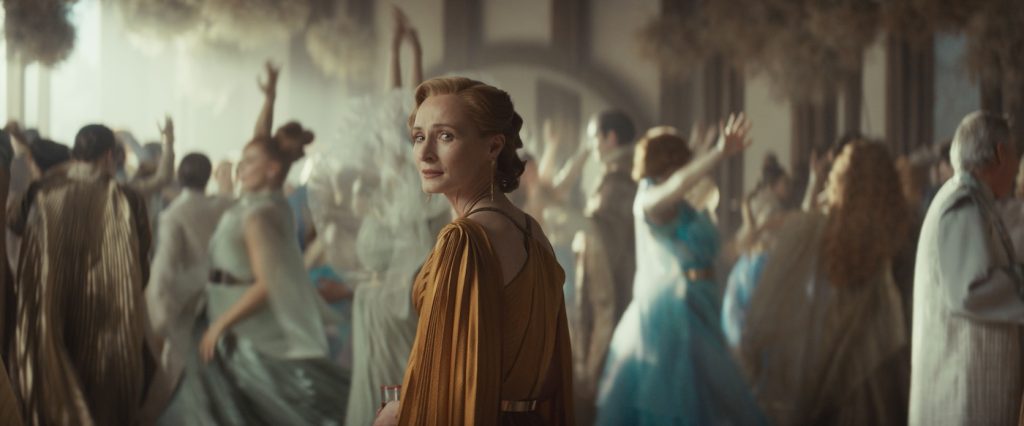
A painted backdrop in a Star Wars series is delightfully retrograde.
Yeah, we painted the backdrop of the mountains we used in Barcelona for the exterior scenes, and I’m so happy we did it in-camera, because it’s one of my favorite scenes. It’s so not Star Wars, but it’s a scene I’m quite proud of. Those differences are what’s really nice about Andor. You have Yavin 4, which is like the old Star Wars movies, it’s dirty and darker, and then you’ve got the ISB, which is white, like everything with the Empire, white and bright and monotone, so there are so many looks in the show, it’s so nice to play with.
Do you have any favorite sequences from the first six episodes?
Yes [laughs]. The scene between Dedra [Denise Gough], Syril [Kyle Soller], and Syril’s mom Eedy [Kathryn Hunter]. The scene in their apartment was so nice to film, and they’re so good. It was so funny because the whole crew was sitting over there, and we were all saying, ‘We know this experience!’ It’s an exaggerated version of what we see with our parents or our girlfriends, and all the details and all the extra things they brought to that scene was really so nice to film.
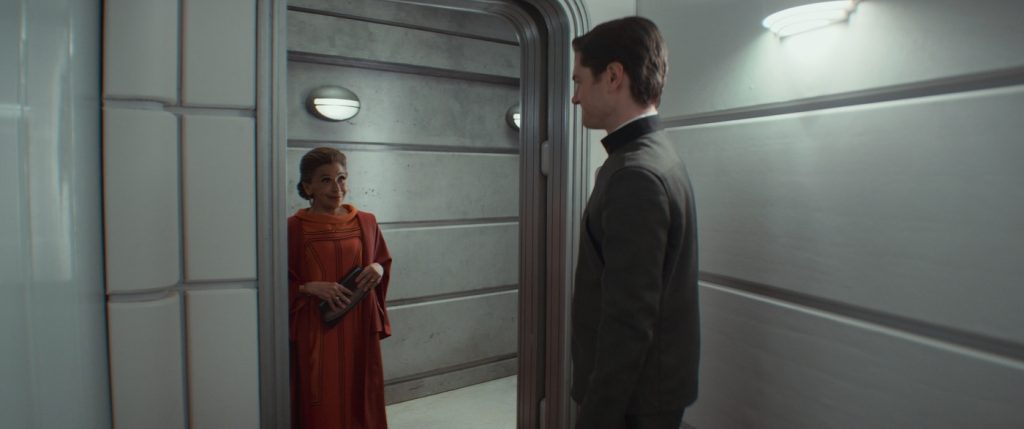
I love that, of all the incredible sequences and high-stakes moments you filmed for this season of Andor, your favorite was a domestic scene between a couple and one very domineering mother.
It’s a really awkward scene, and it’s so nice to play with that awkwardness and underlying tension. We used a lot of fixed shots, and we tried to emphasize the tension with the camera. I really love that scene. When I go home happy, it’s not because I did some great lighting or great shots, it’s because I shot a good scene, and that was a day when I shot a good scene.
Featured image: Diego Luna on the set of Lucasfilm’s ANDOR Season 2, exclusively on Disney+. ©2024 Lucasfilm Ltd. & TM. All Rights Reserved.


